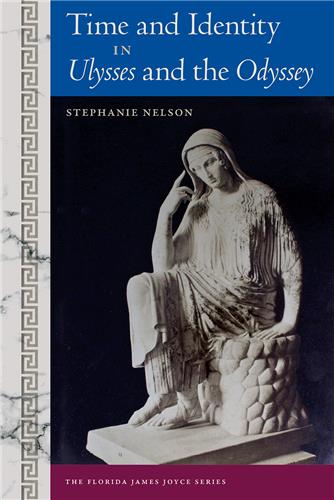Wake Rites
The Ancient Irish Rituals of Finnegans Wake
George Cinclair Gibson
Foreword by Sebastian D. G. Knowles, Series Editor- Series: The Florida James Joyce Series
"A major new treatment of the Ancient Irish rituals accompanying the crowning and powers of the High Kings of Ireland at Tara . . . This rich book supplements our knowledge of Joyce's readings in ancient Irish history and legend, which had been one of the least developed areas in Joyce criticism. I consider that this book is indispensable to any reader of the Wake."—Edmund L. Epstein, Queens College
"Thanks to George Cinclair Gibson's brilliant work of scholarship and spiritual intuition on the festival of Tara—the Teamhur Feis—and its central relationship to the architecture of 'Finnegans Wake,' we can see how James Joyce worked to undo the damage done by St. Patrick and gave us a spirituality in which a more open and cosmic life is affirmed."—William Irwin Thompson
"An admirably learned and lucid presentation of a whole lot of new and important material about Irish mythology in Finnegans Wake . . . a powerful argument for reading much if not all of Finnegans Wake in light of the ancient ceremony of the Teamhur Feis, a ritual with which Wake students have been largely unfamiliar, and which they will need to keep in mind, starting with this book, from now on.”—John Gordon, Connecticut College
Many scholars of Finnegans Wake have long suspected that a key to the Wake lay deep within the core of Irish myth. George Gibson proposes a new interpretation of the novel, based upon a previously unrecognized paradigm from Irish mythology underlying the entirety of the work. This mythic structure derives from the ancient rituals and events collectively known as the Teamhur Feis (the Rites of Tara), the most important religious festival conducted in pre-Christian Ireland.
Gibson demonstrates that sources known and used by Joyce describe the Rites as a historical event with nationwide attendance, an extraordinary and complex array of Druidic ritual, mystical rites, historical reenactments, sacred drama, conclaves, assemblies, and ceremonies performed by a bizarre cast of characters ranging from representatives of Irish deities and personifications of abstract principles to Druids, magistrates, ritual functionaries, and reenactors of the mythic dead. In Irish tradition, the most significant performance of this pagan spectacle occurred in 433 A.D., when Saint Patrick arrived at Tara just as the Rites were reaching their climax. Gibson argues that this pivotal event is also the climax of Finnegans Wake.
Demonstrating remarkable parallels between specific events and performers of the Rites and the episodes and characters comprising Finnegans Wake, Gibson shows that every event and performer at the Rites has a correlate in the novel, and all Wakean episodes and performers have their parallels in the Rites of Tara. Ultimately, he argues, Joyce structured his novel according to the Teamhur Feis, and Finnegans Wake is a calculated reenactment of the most important event in Irish paganism.
George Cinclair Gibson has taught in the Department of English at Louisiana State University.
No Sample Chapter Available
Awards
Donald J. Murphy Prize for a Distinguished First Book - 2006
…an ideal reference text…Gibson includes enough plot summary of Finnegans Wake to make the text a helpful one for readers who are just beginning their foray into Joyce's magnum opus, yet he provides a great deal of new information sure to benefit experienced readers of the Wake.
--James Joyce Literary Supplement
…a remarkable avenue into the power and purposes of the Wake.
--James Joyce Quarterly
" One of those rare books that, like the standards of Wake in scholarship mentioned above, makes the Wake seem so much less difficult. Confirms that Joyce, for all his international modernist reputation, is first and foremost an Irish poet."
--South Atlantic Review
"Taken together, works by Joyce scholars have mapped out the world of the Wake and provided readers with a variety of perspectives-mythic, mimetic, linguistic, conceptual-on its contents."
--Modern Philology











